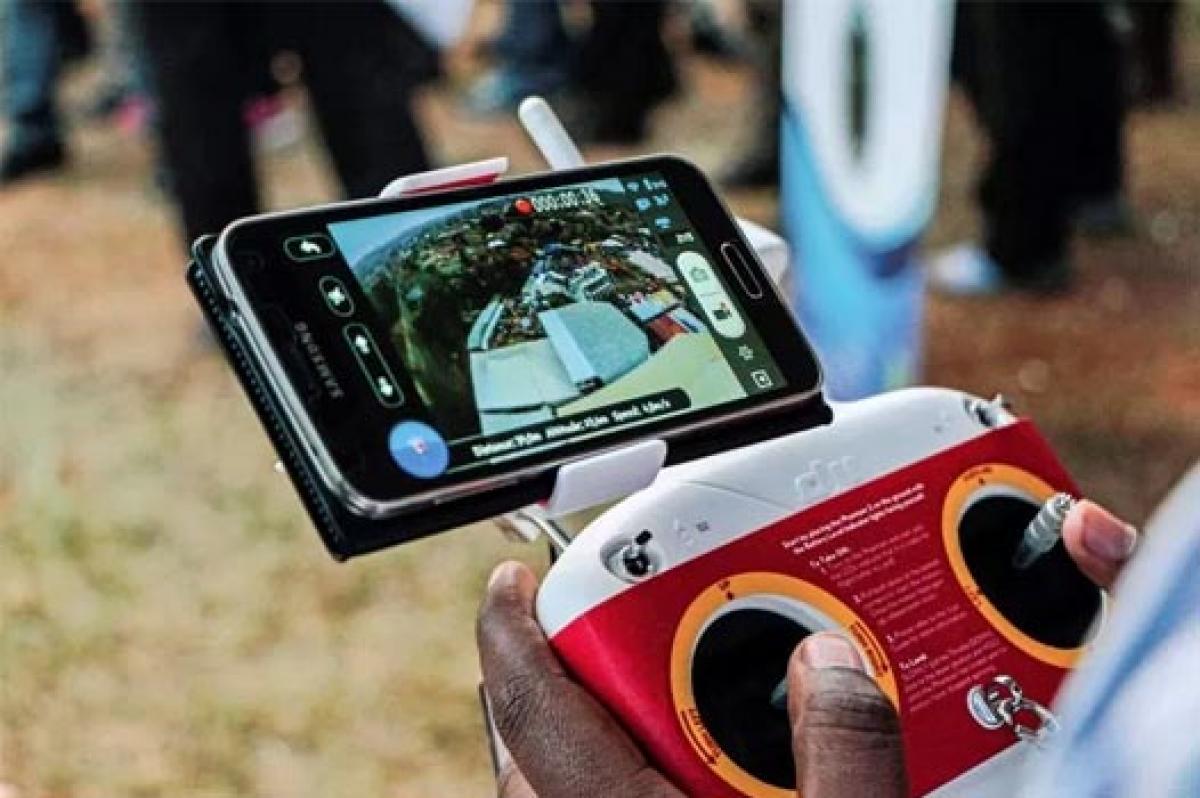Live
- Women's Asian Champions Trophy: Defending champs India defeat Japan 2-0 to set up final against China
- Sydney train network to shut down for four days amid pay dispute
- Cambodia's parliament to approve new Foreign Minister
- Streamlining Disorganized Payment Systems: Thejas Prasad’s Expertise Centralizes Payment Processes into a Unified Oracle Cloud Solution
- J&K Police arrests three drug peddlers in Srinagar
- Godhra victims still waiting for justice: Digvijaya Singh
- Sick industrial units: Bengal govt streamlines monitoring of recovery of loans
- ADB, Tuvalu sign 16.53 million USD grant to improve water, sanitation
- Jharkhand polls: Issues of 'Roti, Beti, Maati' & tribal identity dominated campaign rhetoric
- Kharge seeks President’s intervention to restore normalcy in Manipur
Just In

Instead, it will take place 7,200 miles away — in Rwanda. UPS and Zipline are working on a project to use drones to deliver blood and (hopefully later) lifesaving medicines to villages in rural and other remote places. If successful, this technology has the power to transform how critical medicines are delivered in both the developing and developed world.
im Day Crunch Network ContributorTim Day is the vice president of the U.S. Chamber of Commerce’s Center for Advanced Technology and Innovation.
How to join the networkUnmanned aerial vehicles (UAVs) — more commonly referred to as drones — are on the cusp of a major commercial trial that has the power to save thousands of lives. This pilot program isn’t taking place in the Bay Area or Boise or Boston.
Instead, it will take place 7,200 miles away — in Rwanda. UPS and Zipline are working on a project to use drones to deliver blood and (hopefully later) lifesaving medicines to villages in rural and other remote places. If successful, this technology has the power to transform how critical medicines are delivered in both the developing and developed world.
Even as Rwanda is exploring new possibilities, a second African nation — Nigeria — is erecting major barriers to the use of UAVs. Nigeria has imposed a $4,000 “drone tax” on operators. The government is also forcing companies to register and jump through legal and financial hoops to be eligible. Essentially, this will halt the vast majority of innovative UAV projects in the country.
These divergent approaches mirror a similar debate taking place here at home. How this debate is resolved will, in a very real sense, determine whether UAVs enable us to take a major leap in health and safety within our own borders.
Unmanned aerial vehicles represent an incredible opportunity to advance our nation’s technological leadership.
For most, unmanned aerial systems are a transformative technology that has the power to save lives, improve health and safety and drive economic growth, while reducing costs.
The possibilities are limited only by our imagination and, potentially, regulation. Now — with the FAA issuing the first nationwide drone regulations — getting the balance right is even more important.
The California National Guard uses a Predator drone to aid firefighters battling deadly wildfires up and down the state, and has used the same technology to help find missing persons.
These systems also are being used to help ensure building safety, such as in a demonstration project on bridge safety in Minnesota, as well as at construction sites around the country.
And they have significant commercial purposes, as well — from providing birds-eye photographs, incredible video images for use in movies and, yes, package delivery and pickup, as made famous by Amazon CEO Jeff Bezos during a 60 Minutes interview.
The vast majority of Americans support the deployment of these unmanned aerial systems for safety purposes. A recent poll conducted for the U.S. Chamber of Commerce by Morning Consult found that 8 in 10 Americans support the use of drones for safety inspections of roads, buildings and bridges, and half of Americans are supportive for general and commercial uses.
To be sure, there are very real policy questions raised by the widespread use of these technologies, mostly involving airspace in congested areas.
It is critical that we get these questions answered right, and the first step is passage of the FAA Reauthorization bill. Additionally, we need to prevent the patchwork of state laws from emerging due to the inaction in Washington, DC. If divergent state laws are enacted, it could create different standards in all 50 states and harm the safety around these technologies rather than enhance it.
We should also strongly resist the efforts of those who want to ban drones entirely or place such stringent restrictions on them that they become all but impossible to use.
Ultimately, such a course would be counter-productive, because it would severely limit the benefits that flow from this kind of innovation.
Unmanned aerial vehicles represent an incredible opportunity to advance our nation’s technological leadership, as well as to make incredible advances in disaster relief, providing emergency services and in so many other areas. Yes, we have to get the policy right, but we should not foreclose the opportunities that unmanned aerial vehicles present.
Read More »
Source:Techgig.com

© 2024 Hyderabad Media House Limited/The Hans India. All rights reserved. Powered by hocalwire.com







